
The History of Disgaea
When it was first released on the PS2, the Disgaea series threw the standard template for Strategy RPGs out of the window and turned the idea on its head, affording an almost limitless amount of freedom and gameplay options to the player. It was an irresistible package – and has now led to an entire successful series of titles.
One has to wonder if Nippon Ichi knew what they had in 2003, and if they had any inkling that they had struck onto a formula that would not only help redefine the SRPG genre, but resonate with traditional gamers so much that it would spawn two sequels, numerous spin-offs, several remakes, and lots and lots of merchandise.
With Disgaea 2: Dark Hero Days set to launch on the PSP this week, we’re going to take a look at the history of the Disgaea series – title by-title.
Disgaea: Hour of Darkness
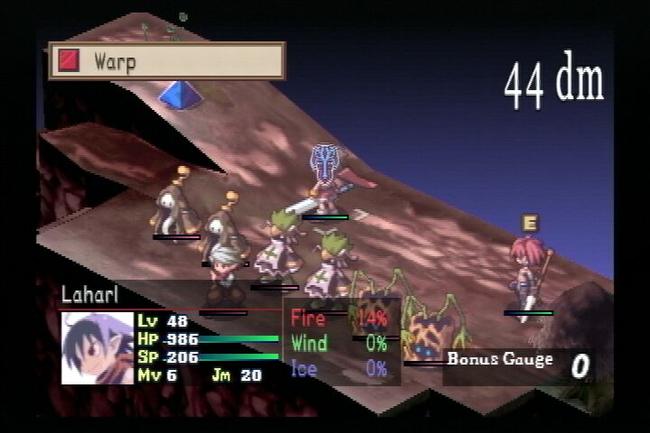
Disgaea had humble beginnings on the PS2, a sprite-based, isometric strategy RPG that took focus off flashy graphics but instead polished the more simplistic, lower budget style to a fine sheen that makes the game appear almost perfect. It hit Japan in January 2003, and eventually made its way to US and European shores where it quickly became a popular cult classic.
Full of funny, self depreciating humour, addictive strategy RPG gameplay and a massive amount of things to do, Disgaea was both new and retro at a time when all RPGs were pushing forwards into high-end, high-budget 3D presentation.
Gameplay twists such as the Item World, which allowed you to enter inventory items and power them up much like your own characters made Strategy RPGs interesting again, while the game’s daunting level cap of 9999 provided a massive amount of gameplay possibilities.
Character creation itself is practically endless, with five tiers for every single class, of which there were over two dozen. Top that all off with a funny, interesting story, and it’s easy to see why Disgaea is such a massive cult classic. You can find our original review of Disgaea: Hour of Darkness here.
Disgaea 2: Cursed Memories
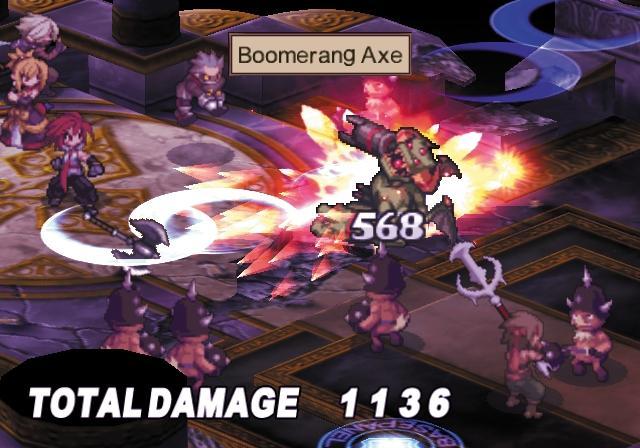
After the surprising success of the first Disgaea game, Nippon Ichi tried out a new free-movement system in the similarly-styled RPG Phantom Brave before returning to the traditional square grid-based movement for the true continuation of the Disgaea series.
Despite remaining familiar, the second title in the series took a very brave move, ditching the cast of the first game and introducing us to a new band of misfits - the obsessively motivated Adell, the stuck-up princess Rozalin, and Tink, a rather perverted frog.
As well as an all new cast and an expansion of the storyline and world introduced in the first title, Disgaea 2: Cursed Memories included a number of new features and improvements over the first title in the series. Chief amongst these was the felony system, where characters could enter another new kind of Item World to receive unique bonuses.
The gameplay overall feels refined, with many of the small complaints fans made about the first Disgaea addressed and even more freedom of choice in developing your mini demon army. People did miss the cast of Disgaea 1, though – so it’s no surprise they returned to that cast after a short while...
Makai Kingdom: Chronicles of the Sacred Tome

While not technically a Disgaea title, Makai Kingdom takes place in the Disgaea universe and features cameos by the three main players from the cast of the first Disgaea title. Makai Kingdom tells the story of another overlord who is trying to prevent the destruction of his realm.
Makai Kingdom has elements of gameplay similar to both Disgaea and Phantom Brave, but experiments a bit more by allowing players to move freely within a set circle around their character. All the classes, equipment and levelling up return as they were in Disgaea, but there are a number of interesting twists on the formula.
Most notably, Makai Kingdom adds vehicles to battle and also uses the random map generation that drove Disgaea’s Item World in regular storyline segments. Ultimately Makai Kingdom proved to not be as popular as Disgaea, but is still a worthy spinoff to the series.
Disgaea: Afternoon of Darkness
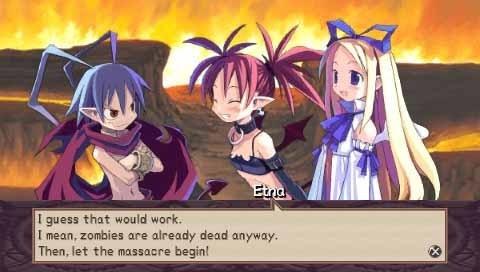
Disgaea: Afternoon of Darkness is a re-release of the first Disgaea game for the PlayStation Portable. The game is essentially the same as the original but with a number of extras, tweaks and changes that would make it a worthwhile purchase even if you owned the original.
The largest extra for Afternoon of Darkness comes in the form of "Etna Mode", which changes the beginning of the game (Laharl accidently gets killed by Etna), and allows you to play through an entirely new story with fan-favourite Etna as the lead character.
Other additions include an ad-hoc sharing mode, a music room, and extra levels and characters, including some fun cameos.
What really made the PSP title worth the purchase wasn’t anything upgraded or changed, though – it’s just simply how well the Disgaea formula works on a hand-held system. It’s deep enough to provide hundreds of hours of gameplay, but it is an absolutely fantastic pick-up-and-play game, perfect for journeys and quick gaming spurts.
Disgaea 3: Absence of Justice
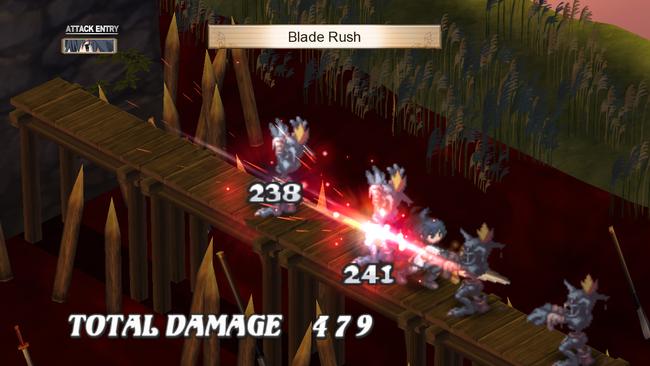
The Disgaea series made the leap to the PS3 with the third official title in the series, subtitled Absence of Justice. From the exterior it looks superficially identical to previous titles, and this lack of use of the PS3 hardware left the game with a rather unfair reception from the press expecting a bigger-budget, next-gen title.
Players who dig a little deeper will find that Disgaea 3 reinvents the wheel almost as significantly as the first game in the series did, with a number of changes, additions that make a major difference to the Strategy RPG gameplay.
The list of changes and additions is almost limitless - Geo Blocks, Character Worlds, Evilities that give your characters limitless inherent abilities, Magi-Changing monsters into weapons, the completely overhauled skill levelling system...
The number of extras is impressive, and would require an entire article of its own to detail. Suffice to say, it took the franchise to an entirely new level, even if it still looked like a PS2 game on the surface. You can find our original review of Disgaea 3: Absence of Justice here.
Disgaea DS
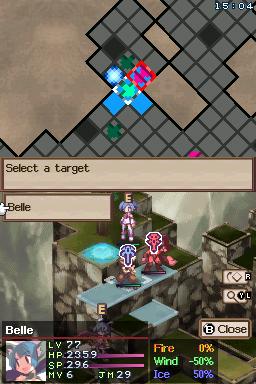
The DS remake of the first Disgaea is an interesting little title. Upon announcement some fans despaired, predicting stripped down graphics and a lack of voice acting – and both those things are true – but Disgaea DS makes up for it by cramming in even more content than the PS2 and PSP titles.
Geo Cubes have been added to the game, ripped straight from Disgaea 3, while a new feature called Demon Gadgets causes random items to pop up on the battlefield that can then be used to power up your characters in the middle of a fight.
Considering the format it was released on, cramming it with so much content was quite the achievement. Best of all, it was just as playable and as deep as previous versions, even if the lack of voice acting damages the story. If you were unfortunate enough not to own both handhelds, it also means you finally had a chance to play this little gem.
Prinny: Can I Really Be the Hero?
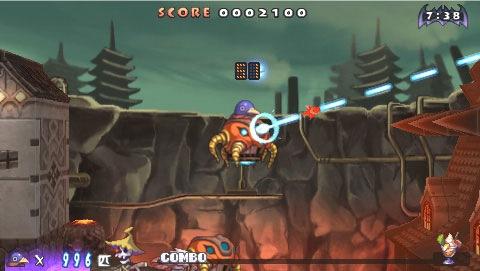
When Disgaea first arrived, one of the things that grabbed people most were the quirky, funny characters that populate the Disgaea universe, including the penguin-like Prinny – who explode when thrown.
Different from the other games in the series, Prinny isn’t even an RPG – it’s a hack-and-slash platformer that’s so difficult it gives you 1000 lives at the start, confident that even that even with such a massive amount of lives the game will be a huge challenge – it’s that damn difficult.
It’s got all the great storyline qualities you’d expect from a Disgaea title, with cameo roles from many of the best characters from the main series, with Etna and Prinny taking starring roles.
It’s incredibly difficult, funny and very, very deep – and so it definitely belongs with the rest of the Disgaea titles, even if it isn’t an RPG.
Disgaea 2: Dark Hero Days
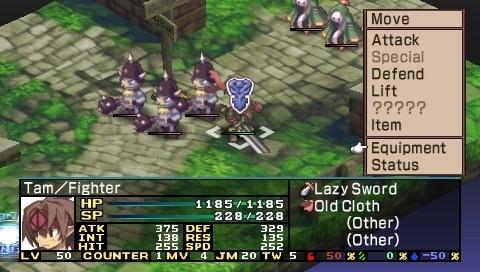
And here we are at the most recent title in the Disgaea series - Disgaea 2: Dark Hero Days for the PSP. As the title suggests, the game is a remake of the original Disgaea 2 for the PSP but unlike the PSP remake of Disgaea 1, the amount of extra content is exhaustive, improving it to no end over the original title.
Dark Hero Days adds on New Skills, new "Peta" levels of spells, new team attacks and five new classes for your party-building needs. Gameplay is significantly altered by introducing the magi-change feature right out of Disgaea 3, and there’s new maximum level content and enemies.
As well as all this there’s a music store, a character paint store and Axel mode – a a six chapter story following the adventures of Axel before Disgaea 2’s proper story opens.
Even if you owned and played the original Disgaea 2 on PS2, this is an insane amount of content and adds a huge amount of extra playtime to the title, and it’s made even better being able to take it with you wherever you want!
You can find our original review of Disgaea 2: Dark Hero Days here. It’s out in Europe this Friday.